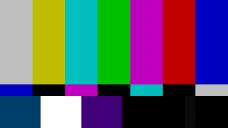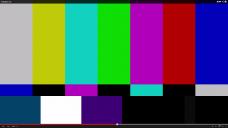
It allows to keep PV going, with more focus towards AI, but keeping be one of the few truly independent places.
-
Hi,
Youtube changes my colors after i upload my videos (264h export) on Youtube . Why is this happening and how can i avoid it? (Left= Premiere preview fullscreen, Right: Youtube Upload fullscreen in 1080p).
I already spend days with this problem and i still have no answer. There are no forum posts about this issue. It seems that im the only one who is complaining? Its very frustrating after spending a lot of time with color correction.
Please heeeeelp!!!!! -.-

 Screenshot_Premiere.jpg1920 x 1080 - 190K
Screenshot_Premiere.jpg1920 x 1080 - 190K
 Screenshot_Youtube.jpg1920 x 1080 - 239K
Screenshot_Youtube.jpg1920 x 1080 - 239K -
@elsalvador -- I've noticed this, Vimeo is much better at preserving quality.
-
Upload compression destroys many things regrettably. Pretty sure there's a long topic on this already in this forum though. Do a search and you should find pages of it somewhere.
-
You need to also show your bars in the exported file, prior to upload, since what you're showing is a preview from within Premiere. Depending on the codec used when you render you can also get unexpected results (particularly when encoding from an RGB source to YUV output). This looks like it could be based on some conversion assumption going between sRGB and rec709 which have different gamma.
No matter what, Youtube re-compresses your source (so you want to upload at very high quality, much higher than Youtube is currently capable of streaming if you care about the quality of your video). Being tuned for computer display it may be predisposed to sRGB colorspace when it does (I haven't looked, don't quote me, this would just make sense) but a lot of people edit and work with rec709 footage and render to that colorspace as well, which is meant to look right on televisions, not computer displays. That's one possibility.
Another is you're going to want to check how your videos look in other browsers. This, I found out the hard way, matters, because different browsers use different libraries for MP4 media, regardless of whether you're choosing Flash or HTML5 streams. I was horrified to find out that a bunch of videos I've uploaded look great when played back on VIMEO with my preferred browser, Chrome, but when I viewed the same streams in Safari they looked like crap. They had what appeared to be major encoding errors, commonly occurring after big scene changes.
The worst part is there's nothing I could do about it. After loads of back and forth with the support staff at VIMEO my only recourse would have been to keep rolling the dice with esoteric tweaks to export settings and re-uploads to try for a file that made it through their re-compression to be properly played back by the decoding libraries used by Safari (and hope that this didn't, in turn, introduce errors when played back by Chrome).
-
@BurnetRhoades, yeah man, that different browser and player stuff is a killer. I gave up too!
-
Get a wide gamut monitor on top of that, and the next purchase should be a strong rope with a loop on one end.
-
Above: Maybe not a direct answer to your problem, but worth a try.
-
The issue is which YUV->RGB conversion matrix YouTube uses when playing the video. In some cases it uses the Rec.709 matrix, and in some cases the Rec.601 matrix. Which matrix is used depends on whether playback uses Flash or HTML5, and it can even depend on what operating system you have, or perhaps which video card or driver you have. If I remember correctly from my tests, HTML5 always used rec.709, and Flash sometimes used Rec.601.
The bottom line is that it's impossible to get YouTube to do what you want in every different playback environment. Rec.709 is the newer standard, and that's what YouTube is moving towards. You should upload YUV-encoded video in the Rec.709 standard. Most video editing apps work in RGB, which means there is a RGB->YUV conversion on export. You'll need to test to determine which conversion matrix is getting used by your software, but by the looks of things it's Rec.709.
Your left image is showing properly rendered color bars at 75% intensity. The right image shows what happens when you export Rec.709 YUV, but play it back as if it were Rec.601 YUV. Take a look at the color bars in the video scope, and you'll see what's going on. The biggest difference will be in the green level.
Your sample images are not showing any problems with level ranges or gamma, though they can also be an issue when exporting for YouTube.
-
Ugh...rec709...NTSC 2.0
Howdy, Stranger!
It looks like you're new here. If you want to get involved, click one of these buttons!
Categories
- Topics List23,993
- Blog5,725
- General and News1,354
- Hacks and Patches1,153
- ↳ Top Settings33
- ↳ Beginners256
- ↳ Archives402
- ↳ Hacks News and Development56
- Cameras2,368
- ↳ Panasonic995
- ↳ Canon118
- ↳ Sony156
- ↳ Nikon96
- ↳ Pentax and Samsung70
- ↳ Olympus and Fujifilm102
- ↳ Compacts and Camcorders300
- ↳ Smartphones for video97
- ↳ Pro Video Cameras191
- ↳ BlackMagic and other raw cameras116
- Skill1,960
- ↳ Business and distribution66
- ↳ Preparation, scripts and legal38
- ↳ Art149
- ↳ Import, Convert, Exporting291
- ↳ Editors191
- ↳ Effects and stunts115
- ↳ Color grading197
- ↳ Sound and Music280
- ↳ Lighting96
- ↳ Software and storage tips266
- Gear5,420
- ↳ Filters, Adapters, Matte boxes344
- ↳ Lenses1,582
- ↳ Follow focus and gears93
- ↳ Sound499
- ↳ Lighting gear314
- ↳ Camera movement230
- ↳ Gimbals and copters302
- ↳ Rigs and related stuff273
- ↳ Power solutions83
- ↳ Monitors and viewfinders340
- ↳ Tripods and fluid heads139
- ↳ Storage286
- ↳ Computers and studio gear560
- ↳ VR and 3D248
- Showcase1,859
- Marketplace2,834
- Offtopic1,320







